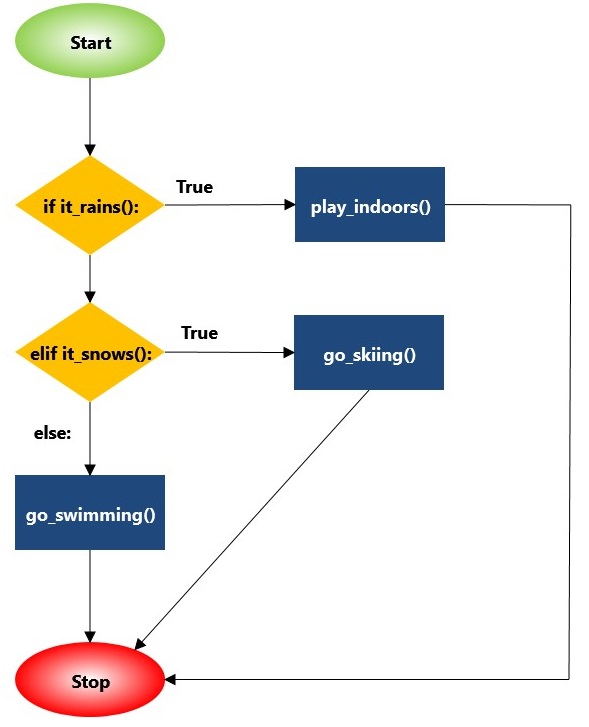Step 13: If/Elif/Else¶
CS20-CP1 Apply various problem-solving strategies to solve programming problems throughout Computer Science 20.
CS20-CP2 Use common coding techniques to enhance code elegance and troubleshoot errors throughout Computer Science 20.
CS20-FP2 Investigate how control structures affect program flow.
CS20-FP3 Construct and utilize functions to create reusable pieces of code.
Tutorial¶
Sometimes you want to create branches in your code where only one out of many possible options can occur. For example, Reeborg lives in Canada where it not only can rain or be sunny, but snow can also be falling. Let’s suppose that only one of those can happen at a time. Then, Reeborg could be faced with the following choices:
if it_rains():
play_indoors()
elif it_snows():
go_skiing()
else:
go_swimming() # assuming it is warm!
Notice the use of elif (which means “else if”) for choice 2. If we took into account other possible weather phenomena, like hail, thunder, fog, drizzle, etc., we could add other choices using additional elif: ... code blocks.
Here is a graphical representation of the choices that Reeborg faces:

In an if/elif/else statement, you should see that it gives three independent choices and only one of them will be executed.
Your Turn¶
Open Step 13 on the Reeborg environment, and copy/paste the following code to begin your solution:
def jump_over_hurdle():
# suitable definition
def run_jump_or_finish():
if at_goal():
done() #tells Reeborg to stop
elif front_is_clear():
# something
else:
# something
repeat 42:
run_jump_or_finish()

Reeborg is jumping hurdles again. This time, however, the hurdles may not all be the same distance apart. You should use a repeat loop to have Reeborg jump the hurdles, and end at the goal (12, 1). You must use an if/elif/else structure in your program.
not Keyword